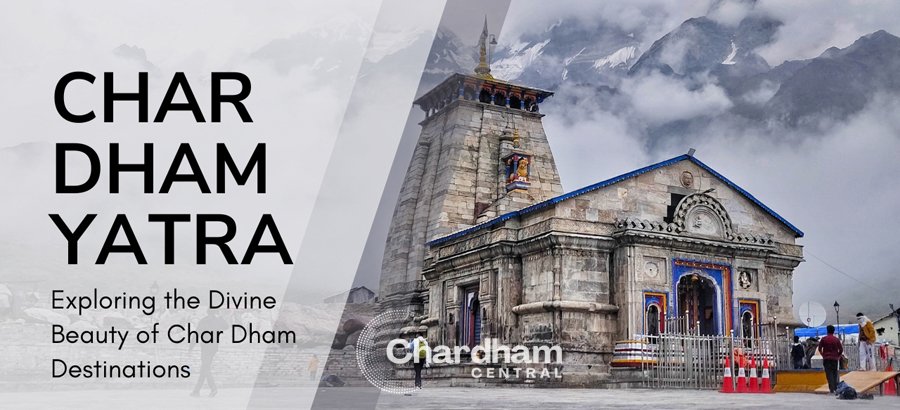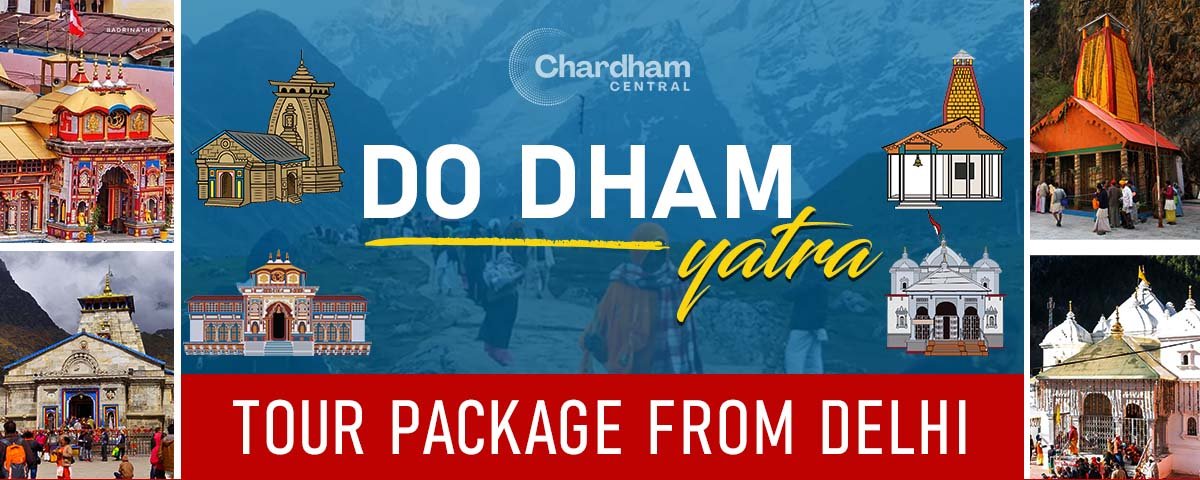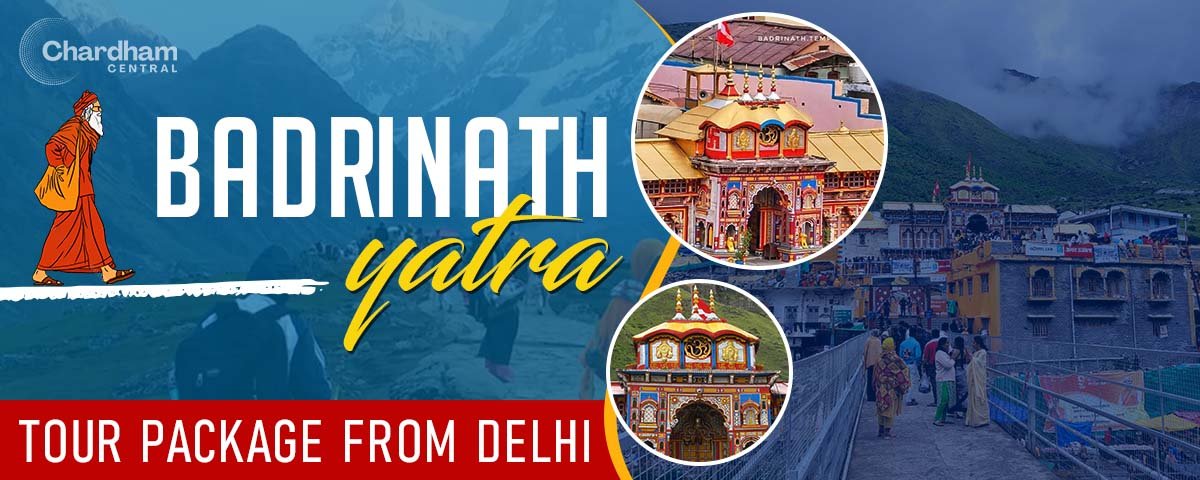
Yamunotri Temple
Yamunotri Temple is a sacred Hindu shrine located in the Uttarkashi district of Uttarakhand. This holy site is dedicated to Goddess Yamuna and holds great religious importance as one of the Char Dham destinations in Uttarakhand. Yamunotri temple is located high up in the mountains at 3,293 meters (10,804 feet) and is surrounded by beautiful snowy peaks, big glaciers, and natural hot water springs.
The Yamunotri Temple marks the origin of the revered Yamuna River. It is nestled on the western slope of the majestic Bandar Poonch peak, which stands at a height of 3,615 meters. According to Hindu mythology, the ancient sage Asit Muni once meditated at this divine location, making it spiritually significant. Yamunotri Temple Uttarakhand, surrounded by natural beauty and mythological relevance, draws thousands of pilgrims and travelers seeking peace, devotion, and a connection to the sacred Himalayas.
Yamunotri Temple History
The Yamunotri Temple holds deep historical and mythological importance in Hinduism. As per Yamunotri Temple history, the original temple was built in 1839 by the King of Tehri, Naresh Sudarshan Shah. It was later reconstructed in the 19th century AD by the Maharani of Jaipur, Gularia Devi, after the temple was damaged by a powerful earthquake. Located near the source of the Yamuna River, the temple stands as both a spiritual destination and a symbol of unwavering devotion and resilience. According to Hindu mythology, the sage Asit Muni meditated at this holy site. In his old age, he was blessed to bathe in both the Yamuna and Ganga rivers daily. When travel to Gangotri became impossible for him, a stream of the Ganga is believed to have appeared near the Yamuna to bless the sage.
Significance of Yamunotri Temple
Yamunotri Temple is devoted to Goddess Yamuna, who is considered a symbol of purity in Hinduism. As one of the sacred Char Dham sites in Uttarakhand, Yamunotri Dham attracts thousands of devotees each year who come to seek the divine blessings of Goddess Yamuna.
Recognized as a significant religious site in Hindu tradition, this temple holds deep spiritual and cultural importance. It is one of the most famous temples in Uttarakhand. According to sacred beliefs, a dip in the holy waters of the Yamuna River is said to cleanse one’s sins, purify the soul, and offer protection from untimely death making it a deeply meaningful ritual for countless pilgrims on their spiritual journey.
Mythology Legends Associated with Yamunotri Temple
In Hindu mythology, Goddess Yamuna is revered as the daughter of Surya Dev (the Sun God) and the sister of Yama, the God of Death. She symbolizes purity and spiritual liberation. It is believed that bathing in the sacred waters of the Yamuna cleanses one’s sins and offers protection from untimely death. This is why the river holds immense spiritual importance, especially at Yamunotri. Before entering the temple, it is customary for devotees to bathe in the natural hot springs that surround the shrine, as a form of purification.
Another powerful legend linked to Yamunotri tells of Lord Shiva’s sorrow after the death of his wife, Sati. Overcome with grief, he wandered carrying her body until Lord Vishnu used his Sudarshan Chakra to divide it into 51 pieces, which fell across different places, later known as the Shakti Peethas. Still unable to find peace, Lord Shiva is believed to have jumped into the Yamuna River to ease his pain. As he submerged, the river is said to have turned black, absorbing his sorrow. This legend reflects the Yamuna’s spiritual power to heal and purify emotional suffering.
Architecture and Design of Yamunotri Temple
Yamunotri Temple is located an altitude of 10,804 feet in the Garhwal Himalayas of Uttarakhand. The temple’s architecture is inspired by traditional North Indian design, featuring a tall, conical tower that stands out amidst the snow-covered landscape. Its sturdy structure is built to endure the region’s extreme climate, including heavy rains and snowfall. The temple follows the Nagara style of architecture, known for its rising spire or shikhara, which is beautifully sculpted with carvings of divine figures, mythological characters, and floral designs.
The Yamunotri Temple inside is just as captivating. The inner sanctum and surrounding walls are adorned with detailed carvings that illustrate stories from Hindu mythology, creating a spiritually uplifting atmosphere for devotees. Just beside the temple is the sacred Suryakund, a hot water spring believed to have healing properties. Near this spring is the Divya Shila, a holy rock that worshippers honor before offering prayers to Goddess Yamuna within the temple.
Deity and Rituals at Yamunotri Temple
Yamunotri Temple is dedicated to Goddess Yamuna, who is worshipped as a symbol of purity and life. The main deity is enshrined in the form of a black marble idol, while a silver idol adorned with garlands also represents the divine goddess. She is believed to be the daughter of the Sun God (Surya) and the sister of Yama, the God of Death.
Near the temple lies the sacred Surya Kund, a natural hot water spring that holds great religious importance. Pilgrims customarily take a holy dip in its steaming waters before proceeding to offer prayers at the temple. The water is believed to have healing and purifying properties, enhancing the spiritual experience of the devotees.
One of the unique rituals here involves cooking rice and potatoes by dipping them into Surya Kund. Wrapped in muslin cloth, these offerings are submerged in the boiling waters. The cooked food is later offered at the shrine and also taken home as prasadam a blessed token from the divine visit.
Seasonal Opening & Closing of Yamunotri Temple
Yamunotri Temple is open only for six months each year due to harsh weather conditions. Yamunotri temple opens every year on Akshaya Tritiya, usually falling in the last week of April or early May, marking the start of the Char Dham Yatra season.
As winter arrives and heavy snow blocks the way, Yamunotri temple closes on Yama Dwitiya (Bhai Dooj), the day after Diwali, usually around October or early November. For the remaining six months, from November to April, the temple remains closed. During this time, the idol of Goddess Yamuna is shifted to Kharsali village, where devotees continue their worship until the temple reopens in spring.
Yamunotri temple is generally open from around 6:00 AM and closes by 7:30 PM, welcoming devotees throughout the summer and early autumn months.
Location and Route to Yamunotri Temple
Yamunotri Temple is located in the Uttarkashi district of Uttarakhand, nestled in the Garhwal Himalayas. Pilgrims traveling to Yamunotri usually reach Janki Chatti, which is the last motorable point on the route to the temple. From Janki Chatti, the Yamunotri Temple is a 6 km trek. Devotees can complete this trek on foot, or opt for palki (palanquin) or pony services, which are especially helpful for elderly pilgrims or those with physical limitations. The Yamunotri trek is of moderate difficulty, and the mountainous terrain can be challenging at times.
Pilgrims can reach Yamunotri only by road, or choose helicopter services that operate up to Kharsali village. From Kharsali, the remaining distance to the temple must be covered on foot or by pony/palki.
Dress Code and Temple Etiquette at Yamunotri Temple
Yamunotri Temple is a sacred site in Uttarakhand, and visitors are expected to dress modestly. While there is no official dress code, wearing full-sleeved, traditional attire is advised, and revealing or sleeveless clothes should be avoided. Footwear must be removed before entering the temple. Devotees should maintain silence, follow temple rules, avoid touching idols, and respect all rituals. A dip or sprinkle from the nearby Surya Kund hot spring is common before prayers. Cleanliness and respectful behavior are essential throughout the visit.
Important Facts About Yamunotri Temple
- Yamunotri Temple is part of the Char Dham Yatra in Uttarakhand.
- Near the temple is Surya Kund, a hot water spring where pilgrims take a holy dip.
- The last motorable point to Yamunotri Temple is Janki Chatti, from where pilgrims undertake a 6 km trek to reach the temple.
- According to legend, sage Asit Muni meditated here, and the temple is linked to stories of Lord Shiva and Goddess Yamuna.
- Pilgrims often cook rice and potatoes in the hot springs as offerings at the temple.
- Every year, Yamunotri Temple opens on Akshaya Tritiya, which falls in the last week of April, and closes on Bhai Dooj.
Yamunotri Temple FAQ's
Yamunotri is located in the Uttarkashi district of Uttarakhand, India. The temple can be reached via a 6 km trek from Janki Chatti, the last motorable point, and is surrounded by stunning natural beauty, including snow-capped peaks and hot springs.
The Yamunotri Temple is located at an altitude of approximately 3,293 meters (10,804 feet) above sea level in the Uttarkashi district of Uttarakhand.
The Yamunotri Temple was originally built by King Sudarshan Shah of Tehri Garhwal in 1839. Later, it was reconstructed by Maharani Gularia Devi of Jaipur in the 19th century after damage caused by an earthquake.
Yes, there is a 6 km trek to Yamunotri Temple. Pilgrims start the trek from Janki Chatti, which is the last motorable point before the temple. The trek can be completed either on foot or by using palki (palanquin) or pony services, which are especially helpful for elderly or physically challenged pilgrims.





